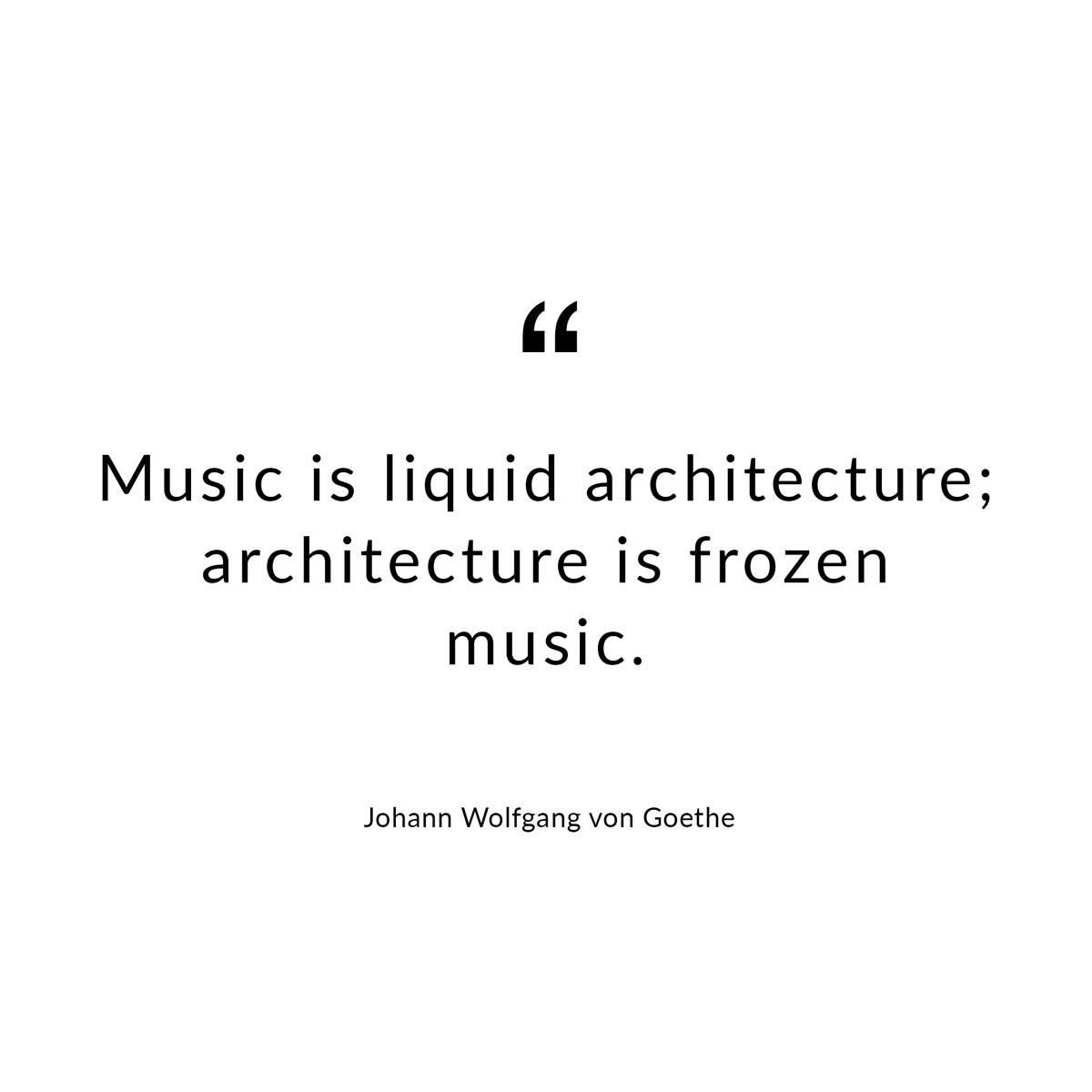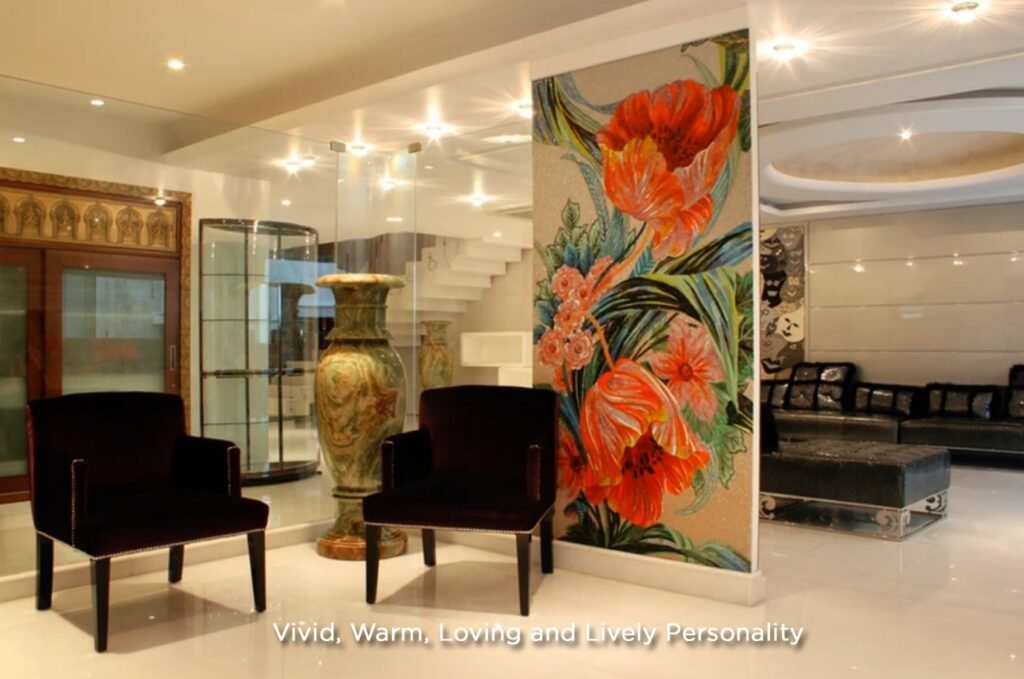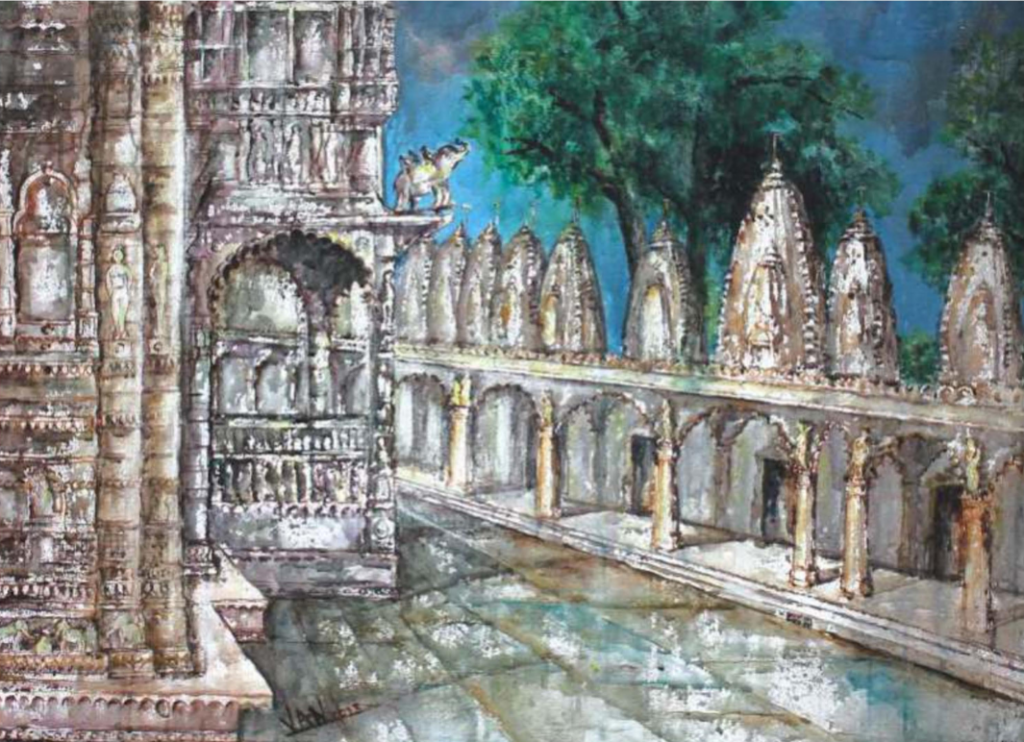~ Johann Wolfgang von Goethe The Essence of Goethe's Analogy At its core, Goethe's statement highlights the fundamental elements that bind music and architecture: Music is Liquid Architecture": The Flow of Time and Experience The first part of the analogy, "Music is liquid architecture," refers to music's temporal nature. Music unfolds over time; it flows, …
~ Johann Wolfgang von Goethe

The Essence of Goethe’s Analogy
At its core, Goethe’s statement highlights the fundamental elements that bind music and architecture:
- Structure and Form: Both art forms are built upon intricate organizational principles. Music relies on scales, chords, melodies, and rhythmic patterns arranged into movements and symphonies. Architecture similarly employs structural systems, geometric forms, and spatial arrangements to create coherent and functional wholes.
- Rhythm and Proportion: Just as music possesses rhythm – the systematic arrangement of sounds in time – architecture exhibits rhythm through the repetition and variation of elements like columns, windows, or facade patterns. Proportion, the harmonious relationship of parts to a whole, is vital in both; the golden ratio, for instance, has been observed in both classical compositions and ancient temples.
- Harmony and Composition: Music aims for harmonious combinations of notes and instruments that create a pleasing auditory experience. Architecture strives for visual harmony, where different materials, textures, and forms are composed in a way that creates a unified and aesthetically pleasing environment.
- Emotion and Experience: Both music and architecture are profoundly experiential. Music evokes emotions, transporting the listener through a sonic journey. Architecture, in turn, shapes our emotions and behaviors through the spaces it defines, influencing our mood, our sense of comfort, and our perception of scale and grandeur.
Music is Liquid Architecture”: The Flow of Time and Experience
The first part of the analogy, “Music is liquid architecture,” refers to music’s temporal nature. Music unfolds over time; it flows, progresses, and transforms with each passing moment. A listener experiences a piece of music sequentially, moving from one phrase to another, one movement to the next, until the composition reaches its conclusion.
- Temporal Progression: Just as a river flows, a musical piece moves through time, revealing its structure and emotional content progressively. A symphony builds tension, resolves it, introduces new themes, and revisits old ones, taking the listener on a journey. This sequential experience is what makes music “liquid.”
- Dynamic and Ephemeral: Music is dynamic; it changes, swells, recedes, and culminates. It is also ephemeral; once a note is played, it fades, existing only in memory and anticipation of the next. This fleeting quality gives music a transient beauty, a constant state of becoming.
- Narrative and Storytelling: Many musical compositions tell a story, evoke a landscape, or depict an emotion through their progression. This narrative flow can be seen as an architectural plan rendered in sound, with movements acting as rooms or spaces, and melodic lines as pathways connecting them. The experience of “moving through” a piece of music is akin to moving through a building. You enter, explore various areas, encounter different atmospheres, and eventually exit, carrying the overall impression with you.
Consider a complex orchestral piece. Its various instruments interweave, rise and fall, creating layers of sound that move and evolve. This is akin to the movement within a grand building, where different spaces, volumes, and functions intertwine, and the experience changes as one moves through it. The way a melody builds to a crescendo then resolves is like walking through a narrow corridor that opens up into a soaring atrium – a moment of release and expansion.
Architecture is Frozen Music”: Structure, Permanence, and Enduring Harmony
The second part of the analogy, “Architecture is frozen music,” highlights the static, tangible, and enduring quality of buildings. Unlike music, which exists in time, architecture exists in space. It is a material manifestation of design principles, held in place, seemingly “frozen” in a moment of creation.
- Spatial Configuration: Architecture defines and manipulates space. Walls, roofs, and openings create volumes and voids that humans inhabit and experience. These spatial relationships are fixed, allowing for a constant, tangible interaction.
- Static Harmony and Proportion: A building, once constructed, stands as a permanent composition. Its proportions, its rhythm of elements, and its overall form are fixed. The harmony it achieves is a visual one, meant to be perceived and appreciated from various vantage points over extended periods. Just as a perfectly constructed chord feels right to the ear, a well-proportioned facade feels balanced and pleasing to the eye.
- Enduring Emotion and Symbolism: While music’s emotional impact is transient, architecture’s is enduring. A magnificent cathedral can inspire awe and reverence for centuries. A humble home can evoke comfort and security for generations. The symbolic meaning embedded in architectural forms – whether a grand monument or a simple doorway – remains tangible and accessible.
- Structured Experience: When one moves through a building, they experience a sequence of spaces, much like listening to music. However, this architectural sequence is physically embodied. The procession from a grand entrance hall, through a series of galleries, and into a climactic central space, is a spatial “composition” with a rhythm and narrative that mirrors a musical score. Each room can be likened to a musical phrase, each corridor a bridge, and the overall building a symphony.
Consider the Parthenon. Its precise proportions, the rhythm of its columns, the harmony of its pediments – all contribute to a sense of timeless beauty and perfect balance. This is its “frozen music.” Each element is meticulously placed, its relationship to the whole precisely calculated, creating a visual symphony that has resonated for millennia. Similarly, a Gothic cathedral, with its soaring naves, intricate stained glass, and repetitive structural bays, creates a deeply resonant and awe-inspiring experience through its “frozen” structural and ornamental patterns, leading the eye and spirit upwards, much like a powerful crescendo in music.
Shared Language and Principles
Beyond the direct parallels, Goethe’s quote points to a shared underlying language and set of principles that artists in both fields intuitively understand:
- Repetition and Variation: In music, a theme is introduced, repeated with variations, and developed. In architecture, a module, a window type, or a material might be repeated across a facade, but with subtle variations in size, depth, or context, adding richness and complexity. This creates rhythm and interest.
- Hierarchy and Emphasis: Both disciplines use hierarchy to guide the audience’s attention. In music, a dominant melody or a powerful brass section might take precedence. In architecture, a grand entrance, a soaring spire, or a central dome draws the eye and signifies importance.
- Contrast and Tension: Music uses dissonance and contrasting dynamics to create tension and release. Architecture employs contrasts in scale, material, light, and shadow to create visual interest and define different spatial experiences. A dark, compressed hallway opening into a brightly lit, expansive room creates a powerful spatial “release.”
- Silence and Void: In music, silence is as important as sound, creating pause and anticipation. In architecture, voids and empty spaces are as critical as solid forms, shaping perception, defining boundaries, and allowing for movement and circulation. The space between the columns is as important as the columns themselves.
- Narrative and Flow: Both music and architecture guide an audience through a curated experience. A musical composition has a beginning, middle, and end, leading the listener on an emotional journey. A building, too, offers a narrative journey as one moves through its spaces, from entry to egress, revealing its story through spatial sequences.
The Architect as Composer, The Composer as Architect
Goethe’s quote elevates both professions. It suggests that an architect, much like a composer, must possess an innate understanding of structure, proportion, and harmony. They must orchestrate various elements – light, shadow, material, volume, scale – to create a unified and evocative experience. The architect composes in three dimensions, using gravity and materials as their instruments.
Conversely, a composer can be seen as an architect of sound. They build intricate sonic structures, layer melodies, and arrange rhythms to create a comprehensive and cohesive auditory environment. Their scores are the blueprints for a sonic world.
Conclusion
Goethe’s profound analogy, “Music is liquid architecture; architecture is frozen music,” serves as a timeless reminder of the profound connections between art forms that might initially seem disparate. It underscores that true artistic creation, regardless of medium, springs from a shared wellspring of human creativity rooted in principles of order, beauty, and emotional resonance.
Music, with its fluid, temporal unfolding, can be understood as architecture in motion – a sequence of auditory spaces and experiences that flow through time. Architecture, conversely, captures and crystallizes these very same principles in a permanent, spatial form, allowing us to inhabit and perceive its structured beauty. Both awaken our senses, stir our emotions, and invite us into a realm of structured harmony, demonstrating that the human impulse to create order and beauty manifests in countless glorious ways, whether heard or seen, transient or enduring. It is a testament to the universality of aesthetic principles and the deep human need to both make and experience meaning through form and expression.






